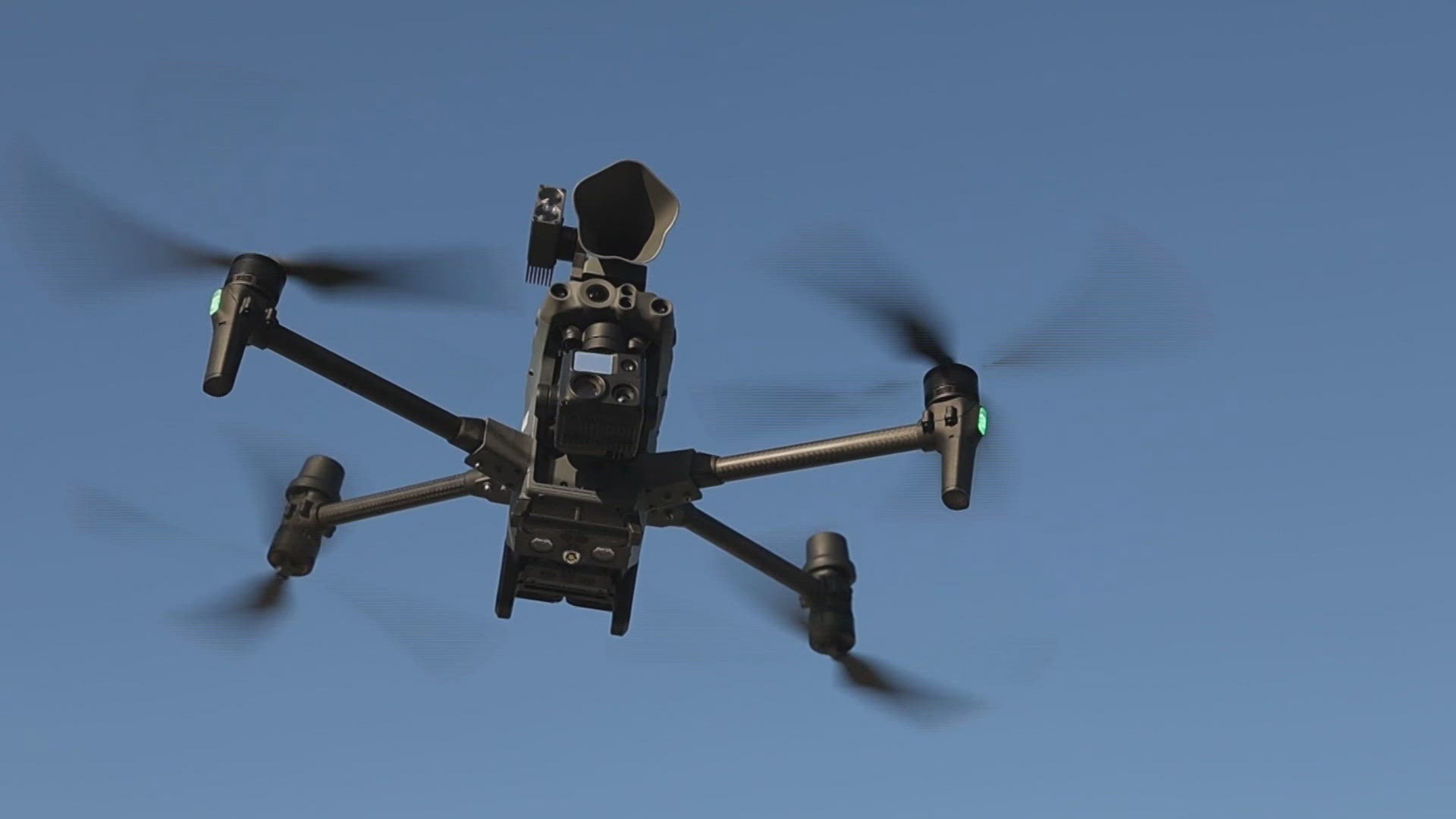ARLINGTON, Texas — The Arlington police and fire departments responded with drones to at least 185 reports of illegal fireworks on July 4.
In nearly 80 percent of those cases, officials addressed the issue and "cleared the call" without sending an officer or firefighter to the scene in person.
The departments are touting the number as a success that freed up resources for more serious emergencies.
"On the 4th of July, our UAS Unit was able to respond to a high volume of fireworks-related calls – and in most cases, get to them much sooner than an officer on the ground would have otherwise been able to," an Arlington Police Department spokesperson wrote in a statement Monday. "Not only does this provide a benefit to the community members who made the reports, but it helped to free up police and fire resources to respond to other calls. We believe UAS technology shows a lot of promise and we look forward to further exploring its applications for public safety and quality of life.”
APD Sgt. Rob Robertson noted Monday the drones likely cleared even more 911 calls about fireworks than the 147 the department is officially crediting them for. Arlington police did not count duplicate responses, where multiple neighbors called 911 to report the same illegal activity.
The city did not respond to every 911 call about fireworks with drones nor did it use the drones for proactive enforcement. The aircraft only went to locations where someone had called 911 to complain about an illegal fireworks display.
Drone operators from each department set up Thursday at six locations around the city. Each station is near a site authorities have identified as a "hotspot" for illegal fireworks activity using data from previous holidays.
Police say, on average, the drones arrived at each scene in a little more than two minutes. It typically took about six minutes to clear those calls, from the drone's arrival to its departure.
The technology allowed police officers and firefighters to quickly determine whether a complaint is legitimate, identify the culprits and even break up illegal shows.
"We're able to get there much quicker, much safer, and we're able to check a larger area," Robertson said Thursday. "We're choosing to put technology to work."
In previous years, first responders checked out each call in person. Often, the illegal shows were over by the time law enforcement or firefighters arrived.
"It's obviously taxing on our firefighters, but also taxing on our fleet," Arlington Fire Department spokesperson Adam Evans said Thursday. "There's wear-and-tear that it puts on our heavy fleet, fuel volume, everything."
Most importantly, Evans said fireworks calls divert manpower from serious emergencies that require immediate attention.
"We want to be in a place where, if there's an actual emergency, we can respond and we're not stuck on a fireworks call," Evans said.
Police and the fire department piloted this program for more than a year before rolling out the full-scale application Thursday.
Each department is expanding its drone operations. The fire department can use the technology to find victims or guide responders around hazards.
Robertson called the drones the "ultimate de-escalation tool" because police can locate a potential threat and communicate with them without jeopardizing an officer's life.
He added that the department will not use the technology to patrol the city. The tool is used only to monitor potential criminal activity that's already been identified or reported, similar to a police helicopter.
"Unmanned aircraft integration has completely redefined how we do policing," Robertson said.

